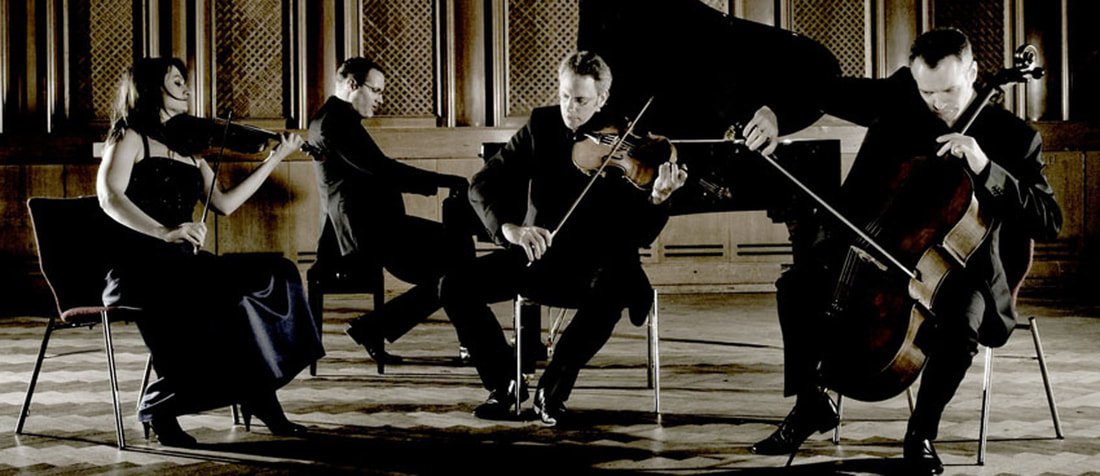What is Chamber Music?
Bill Horne, 20-year board member of the Mill Valley Chamber Music Society, former board president, and current chair of the Artist Selection Committee, writes about chamber music.
The simplest original definition of chamber music is a form of classical music which utilizes a small number of players, usually without a conductor, designed to be heard is a chamber or large room.
That is the short answer. If you are interested in the history and current status of chamber music, please read on.
In the Middles Ages and Renaissance in Europe, small groups of instruments, both viols and horns, usually accompanied singing. As we moved into the Baroque period, polyphony or multiple moving parts were utilized, and a standard form of the trio sonata arose. (Two treble parts and a bass continuo and/or keyboard.) Most of this music was written by composers, employees of nobility to compose and perform in their palace “chambers.”
It was not until the classical style developed in the mid-18th century, which was less polyphonic, and more clearly melodies and accompaniment, that chamber music developed. Franz Josef Haydn almost single-handedly developed two major ensemble forms: the string quartet and the piano trio. He wrote 68 quartets and 45 piano trios.
The romantic style blossomed in the 19th century, highlighting emotional content over strict adherence to form. Technical developments in instruments also provided more combinations and venues, e.g. Liszt as the “rock star,” performing his virtuosic piano pieces on modern grand pianos that could serve in bigger concert halls to swooning ladies. Development in wind instruments, as well, allowed them to proliferate not only in orchestras, but also in chamber pieces. The standard wind quintet arose (flute, oboe, clarinet, French horn, and bassoon). The variety of the different timbres (character) of this assortment of horns particularly appealed to French composers and audiences. As the industrial revolution flourished and aristocracy dwindled, composers began composing directly for public concerts. Playing chamber music in one's home by amateurs also spread to the burgeoning middle class. Chamber music is known as “the music of friends.”
The 20th century ushered in revolutions in musical style, with a variety of theoretical styles: neo-classical, impressionistic, 12-tone, serialism, to name a few. Some of these pieces are difficult to understand, but now it seems lyricism and melody are returning in the 21st century. This eclecticism in style continues, with the added proliferation of many electronic forms of producing, performing, recording and delivering music to audiences.
The exact definition of the parameters of chamber music has evolved over the centuries as well. For example: are a piano recital or sonata (one instrument with or without piano) recital considered chamber music? At Mill Valley Chamber Music Society we say yes, as such performances meet all our criteria for complete music and the intimacy so essential to chamber music. For an amateur chamber organization I belong to which produces amateur chamber music workshops at local colleges, we limit applications to trios or larger ensembles, just because we cannot break even financially with smaller ensembles, not because the music is not worthy. When I was on the board of IntermusicSF, an organization whose goal is to promote chamber music, we kept the broad definition of small ensembles with one player to a part, without a conductor. However we felt that contemporary times led us to include all forms of small ensembles: from renaissance and early music groups, classical and contemporary music, to jazz ensembles, singing groups, even to non-traditional instruments and world music.
It is our belief that live chamber music performances provide the intimacy, immediacy, and emotional contact between audience, the music, and the performers, just like live theater. The lack of a conductor to follow creates an egalitarian, non-verbal connection among performers that unites into a collective emotional experience. Like many of the audience, I grew up on orchestral and operatic performances, and did not discover the joys of chamber music until later in life, actually first by playing such music. However I can be just as involved and emotionally touched by superb performances in excellent auditoria, such as Mt. Tamalpais Methodist Church.

